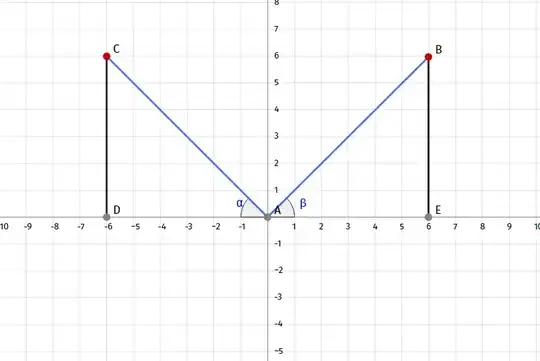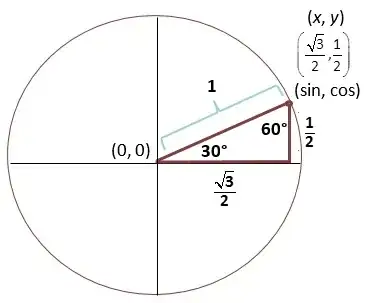I will make use of a diagram to ask the question I am asking. First of all, consider this diagram:
This will be enough for me to ask a question.
Now, let $AC=AB=1$, which means both hypotenuse are radius of a unit circle.
Trigonometric functions for $\beta$ are defined as:
$\sin\beta=\dfrac{BE}{AB}$ , $\cos\beta=\dfrac{AE}{AB}$ and $\tan\beta=\dfrac{BE}{AE}$
This definition of trig functions is very intuitive and self-explanatory. Now, the problem here is that this definition holds only for $\beta\in \left[ 0 , \dfrac{\pi}{2} \right]$.
The definition for obtuse or reflex angles is based the quadrant in which the terminal side of the angle lies in. For instance, lets say we want to define the functions for $\angle CAE$. Since $CA$ lies in the second quadrant, following are the definitions:
$\sin CAE=\dfrac{CD}{AC}$ , $\cos CAE=\dfrac{AD}{AC}$ and $\tan CAE=\dfrac{CD}{AD}$
Now, I haven't seen any proof of why the trig functions of $\angle CAE$ will be equal to the trig functions of an acute angle, with some sign differences, as in this case, trig functions of $\angle CAE$ are equal to those of $\alpha$, with $cos$ and $tan$ functions negative. Is there any proof to it, or is this an intuitive thing that I am not able to grasp?
Another thought that came to my mind was that these functions are just relationships between the sides of a triangle. But, can a side be negative, so can geometry be applied to negative axes too?

